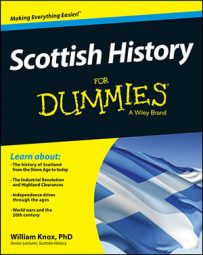The word suffrage comes from the Latin word for ‘vote’, something that until 1918, women in Scotland and the rest of the UK didn’t have. Voters were male, and they argued that they were entitled to the vote because they fought for queen/king and country. This argument didn’t go down well with a lot of women, and the injustice of it made some of them very angry.
The demand for the vote had been around since the 1860s. Back then, the movement was dominated by the Suffragists, women who used peaceful tactics to try to win support for the ‘great cause’ as it was known. In spite of their best efforts, the Suffragists got nowhere. So, at the turn of the century, more militant voices began to be heard. They were known as Suffragettes, and they were prepared to break the law and go to prison for their beliefs. The campaign for women’s suffrage became split between moderates and militants.
You could understand the frustration that women felt at the lack of progress made toward the vote over 40-odd years, but did militancy help or hinder the cause? Scottish Suffragettes fire-bombed Leuchars Railway Station in Fife and Ayr Racecourse, as well as the historic Whitekirk in East Lothian. On top of this, they poured acid into pillar boxes, attacked the prime minister, and slashed portraits of the king. When arrested and imprisoned, they refused to eat, which led to force-feeding, which in turn led to public outcry. Militancy climaxed when the Scottish Suffragette Emily Davidson threw herself in front of the king’s horse at the Epsom Derby in June 1913.
These tactics raised the issue and generated a massive amount of publicity for the cause, but in the end, the public became sickened by these excesses. Militancy got women nowhere. Indeed, in Scotland, the strategy never claimed widespread support, even from women. Most people took the attitude that if you wanted to be a lawmaker, you couldn’t be a lawbreaker.
Most of those women who went to prison were middle or upper class, which raises the question of whether it was simply a campaign for votes for rich women – privileging the already privileged. Some historians have argued that the working-class woman was conspicuous by her absence. But that view seems to ignore that the women’s suffrage movement broadened its appeal as the decades went by, and it got backing from female jute workers in Dundee, as well as from female weavers in Lancashire. It even drew closer to the emerging Labour Party. Some historians point out, however, that, although working women were accepted into the various suffrage societies, it was on the basis that they were the foot soldiers – the officers or leaders like Elsie Inglis and Lady Francis Balfour were from the upper ranks of society.
In 1914, Britain and Germany went to war, and many suffrage groups decided to suspend campaigning until the war was over. Women made a vital contribution to Britain’s war effort. Some people believe that as a result of their war work, women were given the vote in 1918 – but remember it was women over the age of 30. So, it was mainly married women who were enfranchised, and they could theoretically be relied on to vote as their husbands did. The younger women who had borne the burden of the war work were still without the vote. It took another ten years before women had the vote on the same basis as men. But democracy finally triumphed: The suffrage campaigners finally won the argument.

